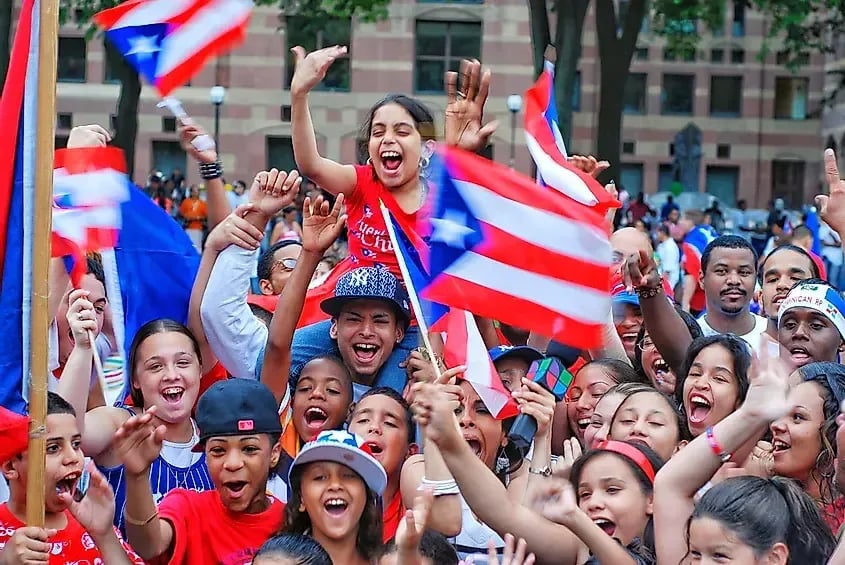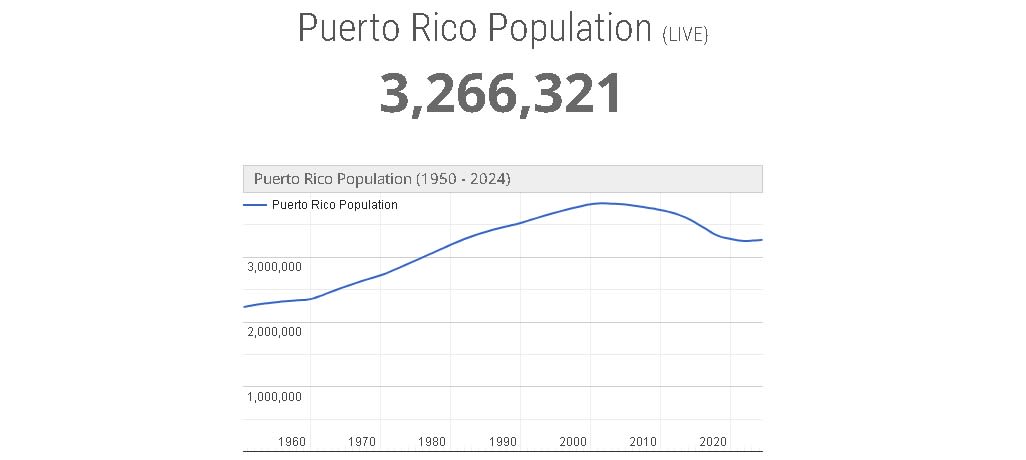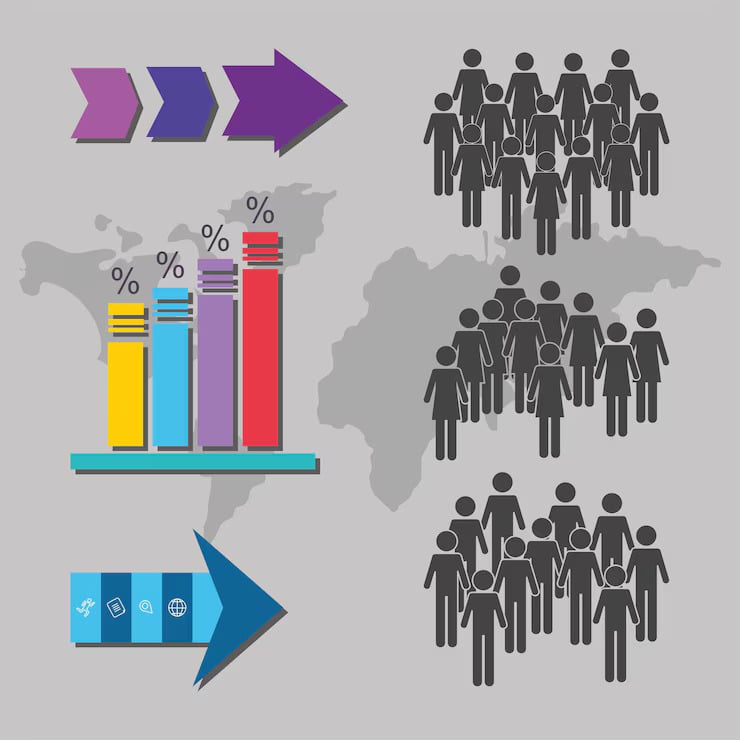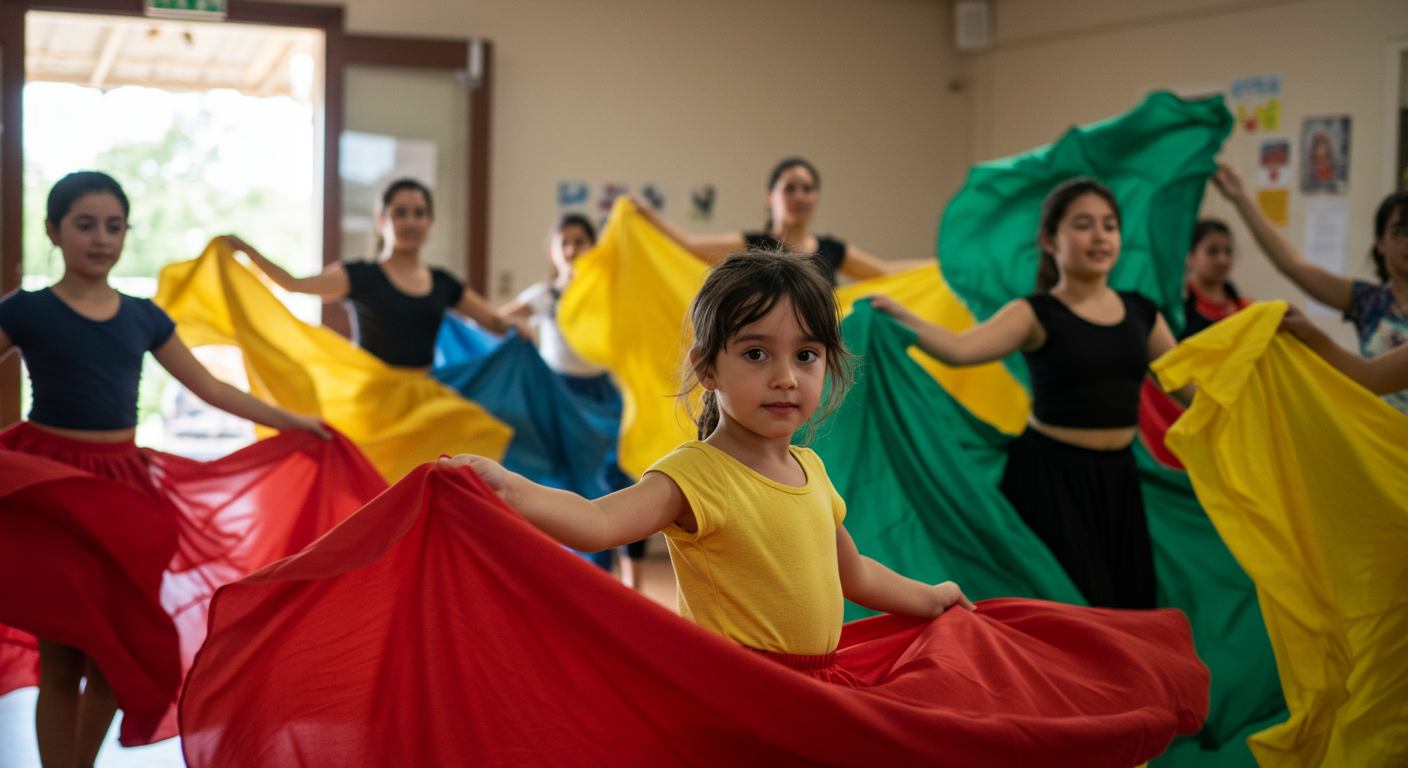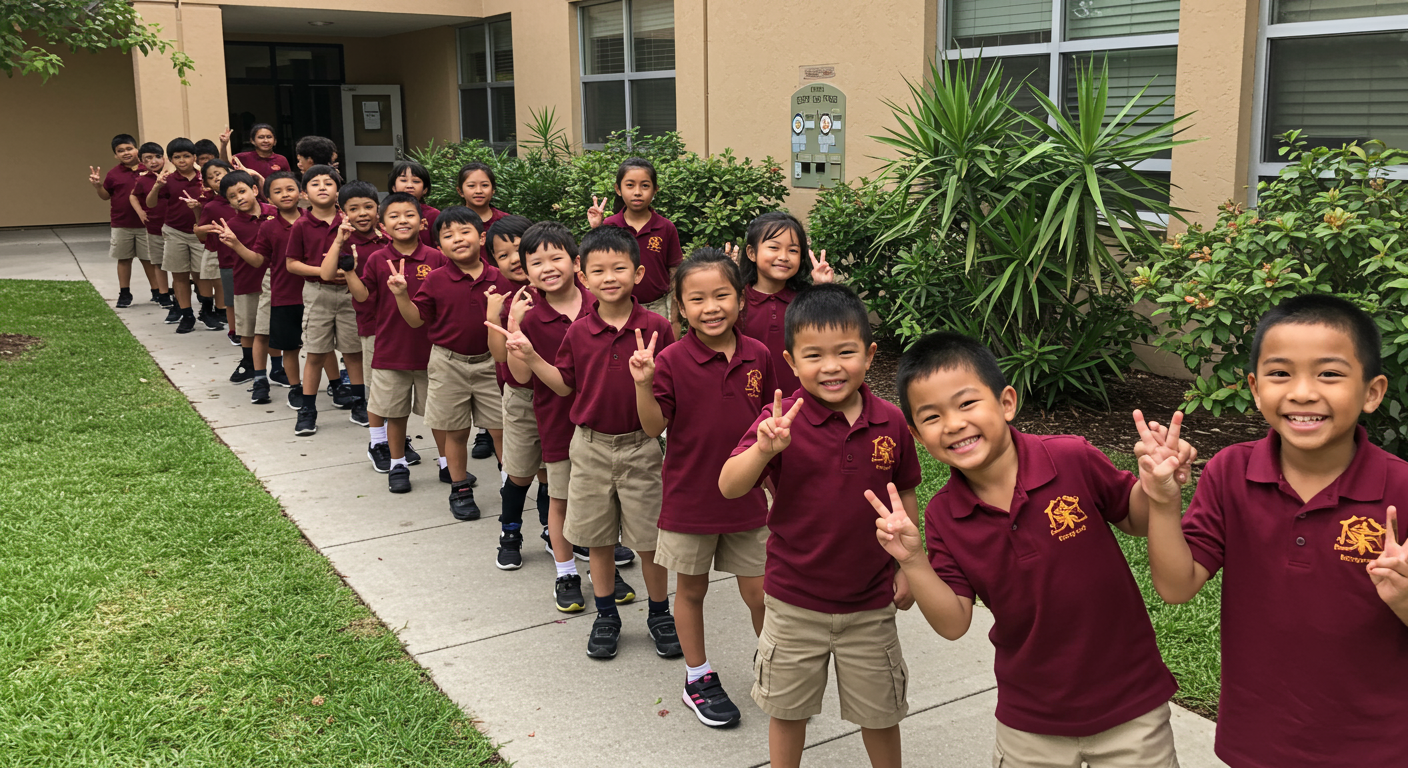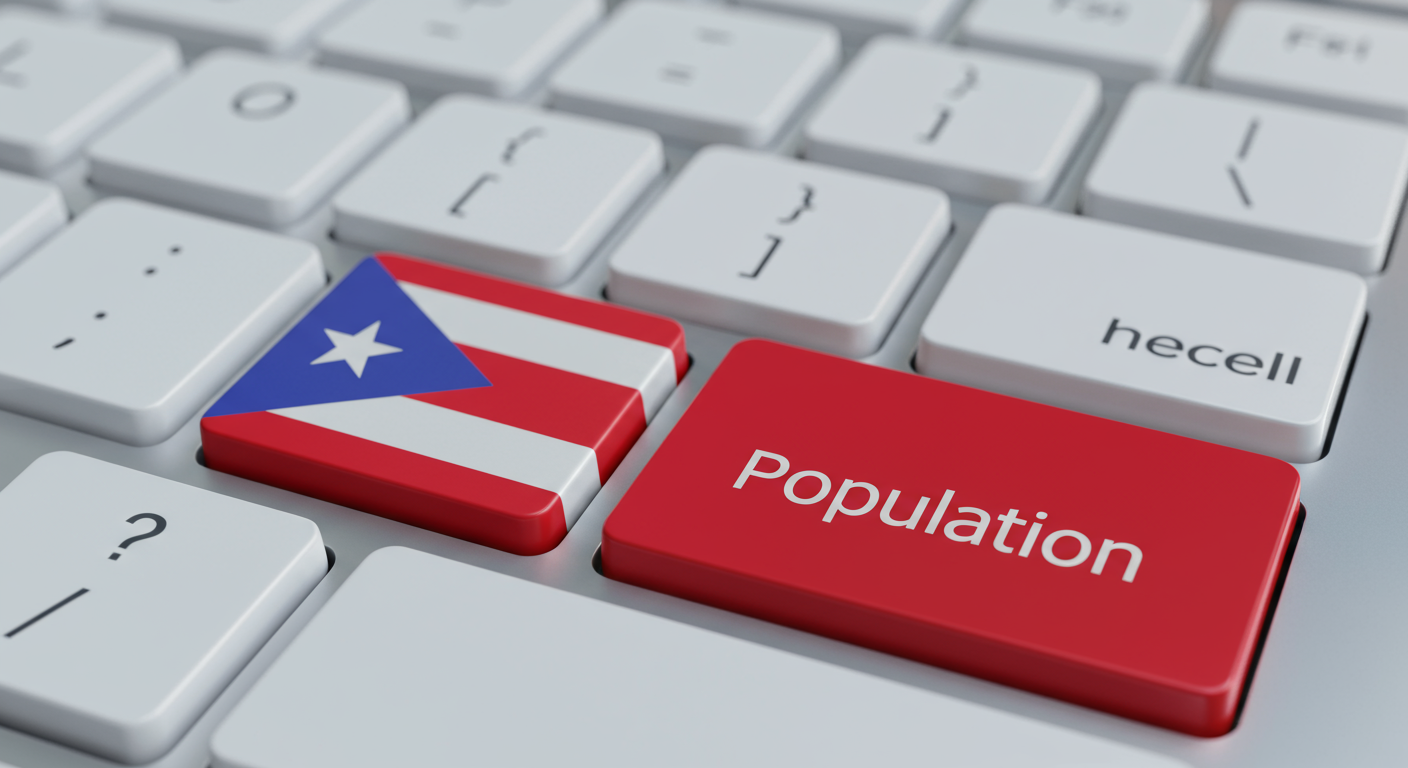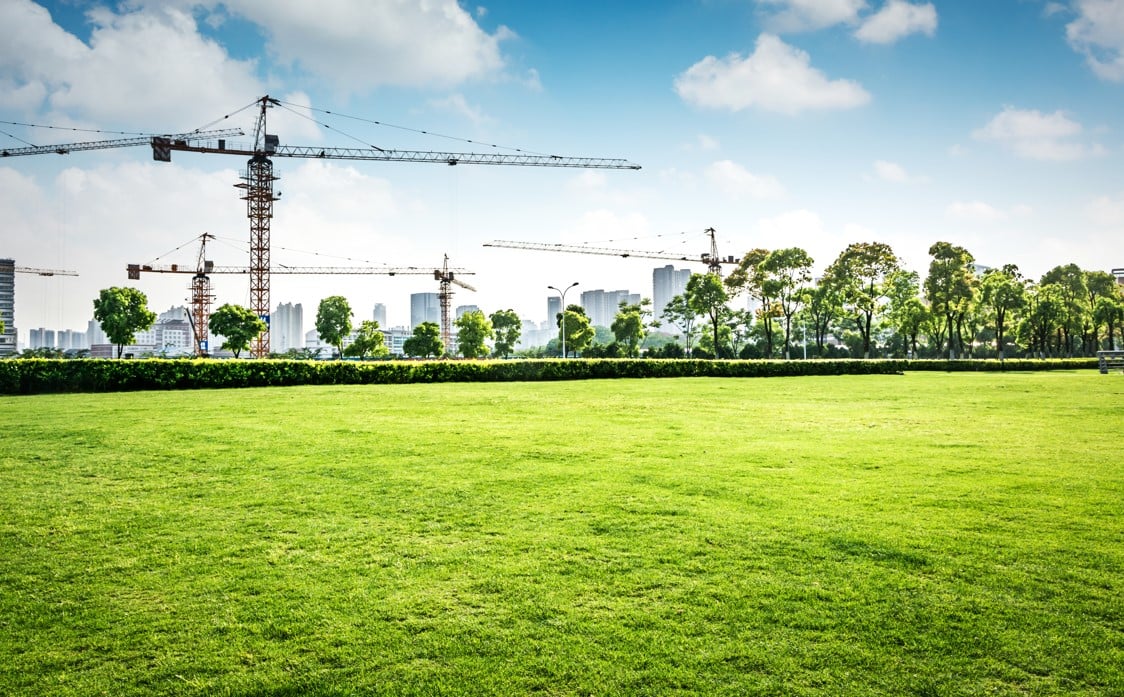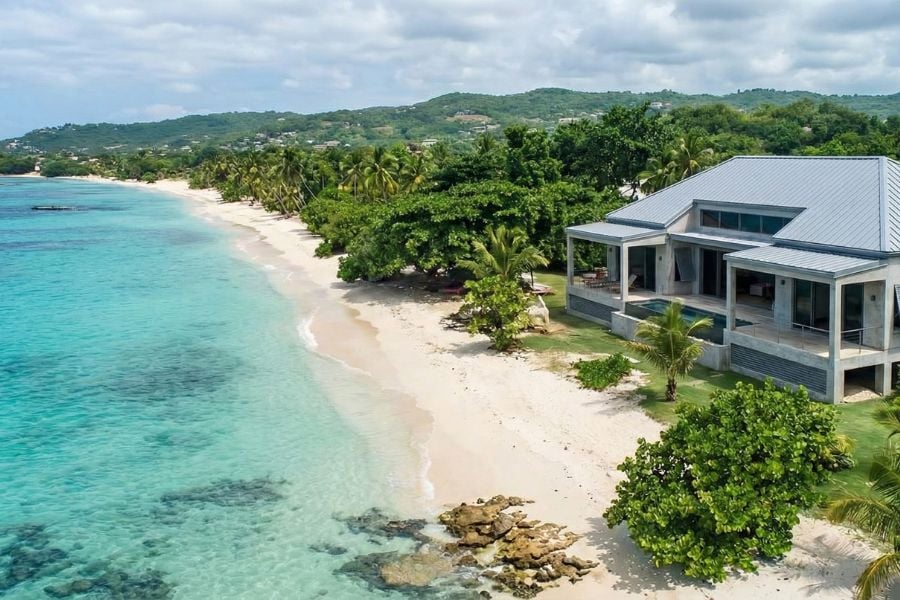Puerto Rico, known as the "Island of Enchantment," is more than just a tropical paradise. It is a land rich in culture, history, and a diverse population. Understanding the population dynamics of Puerto Rico unveils a fascinating tapestry of demographic profiles, ethnic diversity, socioeconomic characteristics, and geographic distribution, including insights into the Vieques population in 2022. In this article, we will embark on a journey to explore the population of Puerto Rico, unveil its major trends, and discover the implications for the future.
Key Takeaways
- What is Puerto Rico's population? It stands at approximately 3.26 million in March 2024, highlights the number of people in Puerto Rico and showcases a diverse and dynamic demographic, reflecting the island's rich history and cultural tapestry.
- Various factors, including economic challenges and emigration, have influenced significant shifts in Puerto Rico's population growth over the years, shaping the social and economic landscape.
- Puerto Rico's demographic profile reveals an aging population, which presents unique challenges and opportunities in healthcare, social services, and intergenerational connections.
- Puerto Rico's ethnic diversity, which includes significant influences from Puerto Rican, African, and European ancestries, contributes to a vibrant cultural heritage and identity.
- Socioeconomic characteristics and geographic distribution across Puerto Rico highlight disparities and the need for targeted interventions to foster equitable growth and development.
What's the Current Population in Puerto Rico?
Image Source: worldometers.info
If you are asking what is the population of Puerto Rico now, it stands at approximately 3,266,283 as of March 2024.
There are 3,260,314 people living in Puerto Rico as of 2023—a 0.24% increase from 2022.
Puerto Rico is the 136th most populated country in the world (including dependent territories). The population density, reflecting cities in Puerto Rico by population, is 368 people per km2, or 952 people per mile2.
Among cities in Puerto Rico by population, San Juan leads with 418,140 residents, the capital, San Juan, is the most populated city while Bayamon is second with 203,499 inhabitants.
Major Urban Centers
- San Juan: 418,140 residents
- Bayamón: 203,499 residents
- Carolina: 176,762 residents
- Ponce: 132,489 residents
These cities serve as Puerto Rico’s economic and cultural hubs, driving infrastructure development and population concentration.
Puerto Rico in the Caribbean Population Rankings
Puerto Rico ranks fourth in population size within the Caribbean, behind:
- Haiti: 11,772,557
- Dominican Republic: 11,427,557
- Cuba: 10,979,783
Understanding Puerto Rico’s standing within the region is essential for economic and demographic comparisons.
Puerto Rico Population 2024: Key Demographic Insights
As of March 3, 2025, the Puerto Rico population 2024 stands at approximately 3,237,557—answering the common query, “what is the population of puerto rico 2024?” This figure highlights the island's ongoing demographic decline, shaped by low birth rates, emigration, and an aging population.
Population Breakdown
Total Population: 3,237,557 (2025 projection)
Population Change: 2024 saw a marginal increase of +0.01%, but projections indicate a slight decrease in 2025.
Urbanization Rate: 100% of the population resides in urban areas, emphasizing the island's shift away from rural living.
Largest Cities:
- San Juan: 418,140 residents
- Bayamón: 203,499 residents
- Carolina: 176,762 residents
Demographic Matrix
| Metric | 2024 Data | Implication |
|---|---|---|
| Median Age | 45.5 years | Aging population, increased demand for healthcare and social services |
| Fertility Rate | 0.9 births per woman | Below replacement level, contributing to population decline |
| Life Expectancy | 81.9 years | Higher life expectancy increases senior care needs |
| Urbanization Rate | 100% | Urban areas face infrastructure and housing challenges |
Puerto Rico's demographic trajectory presents both challenges and opportunities for policymakers. Addressing the population decline will require strategies to retain young people, stimulate economic growth, and enhance social services.
Implications of Population Changes in Puerto Rico
Demographic shifts, particularly changes in the Puerto Rico population 2024, significantly impact key areas such as economic stability, healthcare needs, and workforce sustainability. These evolving factors must be addressed to maintain Puerto Rico’s growth and resilience. Here’s how:
1. Economic Stability
- Declining Workforce: A shrinking population results in a smaller workforce. Fewer workers mean lower productivity, reduced tax revenues, and a diminished economic output. The reduction in population growth can also impact the local demand for goods and services, slowing down economic growth.
- Investment Risk: Lower population growth can make Puerto Rico less attractive to investors, particularly in sectors requiring a growing consumer base. This could reduce the island's ability to stimulate economic development.
2. Healthcare Needs
- Aging Population: The median age in Puerto Rico is increasing, reaching 45.5 years in 2024, which leads to a greater demand for healthcare services, particularly senior care.
- Chronic Care: An aging demographic increases the need for effective management of chronic diseases, specialized geriatric services, and long-term care solutions.
3. Workforce Sustainability
- Emigration Impact: High rates of emigration and a declining fertility rate exacerbate the challenge of maintaining a young, active workforce. Strategies to retain youth are essential for economic sustainability.
Content Matrix for Implications of Population Changes in Puerto Rico
| Topic | Description | Implications | Key Takeaways |
|---|---|---|---|
| Economic Stability and Population Decline | A shrinking population leads to a smaller workforce, which in turn reduces economic growth and investment opportunities. | Reduced workforce Lower demand for goods and services |
Puerto Rico population 2024 indicates that population decline can lead to slower economic growth and investment challenges. |
| Healthcare Needs and Aging Population | An aging population increases demand for healthcare services, particularly in senior care and for the treatment of chronic conditions. | Rising healthcare costs Growing need for elderly care services |
The aging population requires substantial healthcare investments to address senior care and the management of chronic diseases. |
| Workforce Sustainability and Emigration | Emigration and low fertility rates impact Puerto Rico's future workforce, creating challenges for workforce sustainability. | Potential labor shortage Need for youth retention policies. |
Ensuring a sustainable workforce requires addressing high emigration and low birth rates to maintain economic productivity. |
Understanding Puerto Rico's Demographic Profile
The demographic profile lies at the heart of any population analysis. By analyzing historical population growth, age distribution, and gender ratio, we can gain insights into the foundation of Puerto Rico's population dynamics.
But let's dive deeper into the fascinating details of Puerto Rico's demographic profile.
The Historical Population Growth
Puerto Rico's population graph has undergone significant shifts over the past century. From humble beginnings in the early 20th century, the population surged to its peak in the mid-2000s. However, in recent years, Puerto Rico has experienced a decline in population due to various factors, including economic challenges and emigration.
These fluctuations in population growth have shaped the island's history and influenced its social and economic development. They reflect the intricate relationship between Puerto Rico's social, economic, and political landscape.
Exploring the reasons behind these shifts in population growth can provide valuable insights into the challenges and opportunities that Puerto Rico has faced throughout its history.
Age Distribution in Puerto Rico
The age distribution of Puerto Rico is an essential factor in understanding the needs and demands of its population. With an aging population, the island faces unique challenges in healthcare, retirement planning, and social services. However, it also presents opportunities for innovative solutions and intergenerational connections.
By examining the different age groups within Puerto Rico, we can gain valuable insights into the changing face of the island's population and its impact on various sectors. Understanding the needs and aspirations of different age groups can help shape policies and initiatives that cater to the diverse needs of Puerto Rico's population.
Moreover, studying the age distribution over time can provide a glimpse into the societal and cultural changes in Puerto Rico.
Median Age and Aging Trends
As of 2024, Puerto Rico's median age is 45.5 years, highlighting an aging population. This demographic shift presents challenges for healthcare, social services, and workforce sustainability. Policymakers must address the needs of an older population while finding ways to encourage youth retention and economic participation.
Declining Fertility Rates
The total fertility rate in Puerto Rico has dropped to 0.9 births per woman in 2024, well below the replacement level of 2.1. This sharp decline, combined with ongoing emigration, contributes to the shrinking population and raises concerns about the long-term sustainability of Puerto Rico’s labor force.
Life Expectancy Insights
Puerto Rico enjoys a high life expectancy of 81.9 years as of 2024, reflecting advancements in healthcare and quality of life. This extended lifespan necessitates enhanced planning for senior care services, retirement funding, and healthcare infrastructure.
Mortality Statistics
Puerto Rico has an infant mortality rate of 4.9 deaths per 1,000 live births and an under-five mortality rate of 6.5 per 1,000 live births. These figures highlight the effectiveness of neonatal and pediatric healthcare services, although disparities in access remain a challenge.
Gender Ratio Analysis
Gender plays a crucial role in shaping the dynamics of any population. Exploring Puerto Rico's gender ratio helps uncover the unique experiences, challenges, and advancements of men and women on the island.
With a balanced gender ratio, Puerto Rico embraces equality and fosters an inclusive society where the contributions of all genders are valued and celebrated. Understanding the gender dynamics within Puerto Rico can shed light on the progress made in achieving gender equality and highlight areas where further efforts are needed.
By examining the gender ratio across different age groups and regions within Puerto Rico, we can understand how gender influences various aspects of life, including education, employment, and representation in leadership positions.
Ultimately, understanding Puerto Rican populations goes beyond mere statistics. It provides a window into the rich tapestry of the island's history, culture, and aspirations. By delving into the details of population growth, age distribution, and gender ratio, we can better appreciate the complexities and nuances that shape Puerto Rico's population dynamics.
Ethnic Diversity in Puerto Rico
Image Source: pulitzercenter.org
Puerto Rico's ethnic diversity is deeply rooted in its history, shaped by various cultural influences over centuries. The blending of indigenous, African, and European cultures, along with later immigration waves, has created a vibrant and multifaceted identity that continues to evolve.
1. Indigenous Taíno Influence
The Taíno people were the original inhabitants of Puerto Rico, known for their agricultural advancements and artistic expressions. Their influence is still present in many aspects of Puerto Rican culture, particularly in the language, with words like huracán (hurricane) and barbacoa (barbecue) originating from their vocabulary. Traditional foods such as cassava and plantains also stem from Taíno agricultural practices.
Despite being largely displaced due to Spanish colonization, the Taíno legacy remains an integral part of Puerto Rico’s identity, celebrated in festivals, art, and local folklore.
2. African Influence in Puerto Rican Culture
During the transatlantic slave trade, enslaved Africans were brought to Puerto Rico, introducing rich traditions, music, and religious practices. Their presence played a crucial role in shaping the island’s cultural identity, particularly in the development of Afro-Caribbean musical genres such as bomba and plena. These music styles, known for their percussive beats and call-and-response singing, remain popular today.
African influence is also evident in religious syncretism, with spiritual practices like Santería blending Catholicism with African traditions. The contributions of African heritage to Puerto Rican culture are profound, adding to the island’s rhythmic, artistic, and spiritual expressions.
3. European and Spanish Colonial Impact
Spanish colonization in the 15th century left an indelible mark on Puerto Rico, fundamentally shaping its society, language, and religion. The Spanish influence is visible in the island’s Catholic traditions, colonial architecture, and legal systems. Cities like San Juan feature European-style plazas, cathedrals, and fortresses that date back to the colonial era.
Additionally, Puerto Rico saw waves of European migration from regions such as Corsica and the Canary Islands, further diversifying its population. Over time, Spanish customs merged with indigenous and African influences, creating a distinctive Puerto Rican identity.
The Role of Immigration in Puerto Rico’s Ethnic Diversity
Beyond the foundational influences of Taíno, African, and Spanish cultures, Puerto Rico’s diversity has been further enriched by immigration. The island has experienced migration from various parts of the world, adding new cultural elements to its evolving identity.
1. Caribbean and Latin American Migration
Puerto Rico has long been a destination for migrants from neighboring Caribbean countries such as the Dominican Republic and Cuba. These migrations have contributed to the local economy, influenced language variations, and introduced new culinary and musical traditions. The cultural exchange between Puerto Rico and other Caribbean nations continues to shape its identity, reinforcing its role as a melting pot within the region.
2. Asian and Middle Eastern Influences
In the 19th century, Chinese immigrants arrived in Puerto Rico, primarily working in agriculture and trade. Their influence can be seen in the culinary scene, where Chinese-Puerto Rican fusion cuisine has become a unique aspect of the island’s gastronomy. Additionally, Middle Eastern immigrants, particularly Lebanese families, have settled in Puerto Rico over the years, contributing to local businesses and cultural traditions.
Cultural Impact of Puerto Rico's Ethnic Diversity
Puerto Rico’s diverse ethnic background has influenced its music, cuisine, and arts, creating a cultural landscape that is rich in expression and tradition.
| Category | Description | Key Influences | Examples |
|---|---|---|---|
| Music & Dance | Puerto Rico's music reflects African, Spanish, and indigenous roots. | African rhythms, Spanish melodies, Taíno influences | Salsa, reggaeton, bomba, plena, folk music |
| Cuisine | A fusion of Taíno, African, and Spanish culinary traditions. | Indigenous crops, African flavors, Spanish cooking techniques | Mofongo, lechón asado, arroz con gandules |
| Arts & Traditions | Artistic expressions blend indigenous, colonial, and African influences. | Taíno petroglyphs, Spanish colonial art, African festival traditions | Vejigante masks, Ponce Carnival, colonial architecture |
Socioeconomic Characteristics of the Population
Image Source: cambridge-strategies.org
Unraveling the socioeconomic characteristics of Puerto Rico's population presents a comprehensive understanding of the island's social fabric. By analyzing education levels, employment, unemployment rates, and income and poverty levels, we can gauge the well-being and opportunities available to the people of Puerto Rico.
Puerto Rico, an island rich in culture and history, is home to a diverse population with unique socioeconomic backgrounds. The socioeconomic characteristics of this population provide valuable insights into the challenges and opportunities that exist within the island's social structure.
Education Levels Among the Population
Education is a cornerstone of societal development, and Puerto Rico's population is no exception. Examining education levels provides valuable insights into the island's commitment to fostering knowledge, innovation, and personal growth.
Puerto Rico boasts a robust education system that offers its residents various educational opportunities. From early childhood education to higher education institutions, the island strives to provide quality education for all. By delving into the education landscape, we can celebrate the achievements and identify continued improvement opportunities to ensure quality education for all.
Furthermore, understanding the population's educational attainment allows us to assess the impact of education on various aspects of life, such as employment prospects, income levels, and overall well-being.
Employment and Unemployment Rates
Understanding employment and unemployment rates illuminates the economic realities faced by Puerto Rico's population. By studying the job market, we can gain insights into the island's industries, labor force participation, and the challenges faced by job seekers.
Puerto Rico's diverse economy encompasses manufacturing, tourism, agriculture, and services. Analyzing employment and unemployment rates provides a comprehensive picture of the job market dynamics, including job creation, job stability, and the impact of economic fluctuations on employment opportunities.
This analysis helps identify trends, potential economic growth areas, and areas needing support to promote a thriving job market for all Puerto Ricans. It also highlights the importance of policies and initiatives to reduce unemployment rates and create sustainable employment opportunities.
Income and Poverty Levels
Income and poverty levels provide a lens through which we can assess Puerto Rico's population's well-being and economic disparities. Examining income distribution, poverty rates, and access to essential services sheds light on the challenges individuals and families face on the island.
Puerto Rico, like many other regions, experiences income inequality, with some segments of the population earning significantly higher incomes than others. Understanding these dynamics is crucial for developing targeted interventions and policies to address poverty and promote economic mobility.
By understanding the factors contributing to income disparities and poverty levels, policymakers and stakeholders can work towards creating a more equitable society and improving the overall standard of living for all Puerto Ricans. This includes initiatives that increase access to education, job opportunities, affordable housing, healthcare, and social support systems.
In conclusion, unraveling the socioeconomic characteristics of Puerto Rico's population provides valuable insights into the island's social fabric. By analyzing education levels, employment, and unemployment rates, as well as income and poverty levels, we can better understand the challenges and opportunities faced by the people of Puerto Rico. This understanding is a foundation for developing targeted strategies and policies promoting economic growth, social well-being, and a more equitable society.
Geographic Distribution of the Population
Puerto Rico's demographics and geographical landscape influence its population distribution. Understanding the urban vs. rural population and analyzing population density across regions uncover the unique opportunities and challenges faced by different communities.
Puerto Rico, an archipelago in the northeastern Caribbean Sea, is a land of natural beauty and cultural diversity. PR population is concentrated in various regions, each with its own distinct characteristics and charm. Let's delve deeper into the population's geographic distribution to better understand Puerto Rico's vibrant communities.
Urban vs Rural Population
Puerto Rico is a land of contrasts, with bustling urban centers and serene rural landscapes. The urban population is primarily concentrated in the metropolitan areas of San Juan, Bayamón, and Carolina, where the fast-paced lifestyle and vibrant cityscape attract residents and tourists alike. These urban centers serve as economic hubs, offering various employment opportunities, educational institutions, and cultural attractions.
On the other hand, Puerto Rico's rural population resides in picturesque towns and villages scattered across the island. These rural communities are known for their close-knit relationships, traditional agricultural practices, and slower pace of life. The lush greenery, breathtaking mountains, and pristine beaches make these areas ideal for those seeking a peaceful and idyllic lifestyle.
Exploring the urban vs. rural population dynamics allows us to appreciate the island's diverse lifestyles, economic activities, and infrastructure development. It provides valuable insights into Puerto Rico's social fabric and cultural heritage, highlighting the importance of preserving urban and rural communities.
By understanding the unique needs of each community, policymakers and stakeholders can work towards promoting balanced growth and sustainable development. Initiatives can be implemented to improve infrastructure, healthcare services, and educational opportunities in rural areas while preserving cultural heritage in urban centers.
Urban Population Concentration
In 2024, 100% of Puerto Rico's population is classified as urban, totaling approximately 3,242,204 people. This shift away from rural living highlights how Puerto Rico's infrastructure, services, and employment opportunities have concentrated in metropolitan areas.
Where Do Most People Live in Puerto Rico?
Puerto Rico’s population is primarily concentrated in its urban centers, with San Juan leading the way as the island’s economic, cultural, and governmental hub. Here's a closer look at the key areas where most people live:
-
San Juan Metropolitan Area: The capital city of San Juan remains the heart of Puerto Rico’s population, housing 418,140 residents. As the largest city, it offers a wide range of job opportunities, cultural activities, entertainment, and essential amenities, making it the primary destination for both locals and newcomers. The city’s vibrant downtown and its proximity to government institutions attract professionals, students, and entrepreneurs.
-
Bayamón and Carolina: With populations of 203,499 and 176,762, respectively, Bayamón and Carolina are suburban extensions of San Juan. These areas benefit from their proximity to the capital while offering a more tranquil lifestyle, making them attractive to families and those seeking a quieter living environment with access to the capital's amenities.
-
Ponce: Ponce, Puerto Rico's second-largest city with 132,489 residents, is located in the south. Known for its historical significance and vibrant arts scene, Ponce attracts those seeking a slower pace of life, while still being a major economic hub for southern Puerto Rico.
-
Rural Areas and Smaller Towns: Rural regions, such as Vieques and Culebra, have a smaller, more transient population. These areas are often influenced by tourism, with many seasonal residents who come for the island's natural beauty and relaxed atmosphere.
Content Matrix: Where Do Most People Live in Puerto Rico?
| Area | Population | Key Features | Appeal/Attraction |
|---|---|---|---|
| San Juan Metropolitan Area | 418,140 residents | Capital city, economic, cultural, and governmental hub | Job opportunities, amenities, entertainment, education |
| Bayamón | 203,499 residents | Suburban extension of San Juan, quiet lifestyle | Proximity to San Juan, affordable housing, family-friendly |
| Carolina | 176,762 residents | Suburban area, near San Juan, coastal influence | Quiet living, access to beaches, close to the capital |
| Ponce | 132,489 residents | Southern city, historical significance, arts and culture | Slower pace of life, economic hub for the south, and cultural appeal |
| Rural Areas & Smaller Towns | Transient population | Includes Vieques, Culebra, influenced by tourism | Peaceful, idyllic living, seasonal residency, natural beauty |
Population Density Across Regions
Puerto Rico's population density varies across different regions, uncovering disparities in access to resources, public services, and infrastructure. The distribution of population density paints a vivid picture of the challenges communities face and the potential for targeted interventions to foster equitable growth.
The densely populated regions of Puerto Rico, such as the San Juan Metropolitan Area, experience high demand for housing, transportation, and public services. The concentration of people in these areas puts pressure on the existing infrastructure, leading to traffic congestion and overcrowded schools. Improving urban planning and expanding infrastructure are crucial to ensure residents' well-being and quality of life in these densely populated regions.
In contrast, rural areas in Puerto Rico often face challenges related to access to healthcare, education, and economic opportunities. The lower population density in these regions can make it more difficult to provide essential services and attract investments. However, these areas' natural beauty and cultural richness present opportunities for sustainable tourism and agricultural development, which can contribute to the economic growth of rural communities.
This analysis helps create a roadmap for optimizing resource allocation and fostering sustainable development across the island. By identifying areas with high and lower populations, policymakers can prioritize investments and interventions to ensure that all communities in Puerto Rico thrive.
Population Density Metrics
Puerto Rico's population density in 2024 is 366 people per square kilometer (947 per square mile), based on a total land area of 8,870 km² (3,425 sq. miles). The highest density is observed in urban centers like San Juan, Bayamón, and Carolina, which concentrate the bulk of the island’s population.
Future Projections for Puerto Rico's Population
Looking toward the future, predicting population trends in Puerto Rico provides a glimpse into potential demographic shifts and challenges. Understanding the implications of population changes allows us to prepare for the evolving needs of the island's residents.
Predicted Population Trends
Experts and demographers project various scenarios for Puerto Rico's future population. By analyzing these forecasts, we can anticipate demographic changes, plan for infrastructure development, and proactively address emerging social, economic, and environmental challenges.
These projections serve as a foundation for evidence-based decision-making and policy formulation to ensure a prosperous future for Puerto Rico.
Recent Population Trends
Puerto Rico's population has shown slight fluctuations in recent years:
- 2023: 3,242,023 people
- 2024: 3,242,204 people
- 2025 (projected): 3,235,289 people
This continued decline is driven by aging, emigration, and low birth rates, raising concerns about workforce sustainability and economic growth.
Implications of Population Changes for Puerto Rico
Population changes have far-reaching implications for Puerto Rico's social, economic, and environmental well-being. By understanding these challenges and opportunities, policymakers, community leaders, and individuals can collaborate to shape the island's future to promote inclusivity, sustainability, and resilience.
This proactive mindset prepares Puerto Ricans to thrive in change and build a stronger, more vibrant island for future generations.
In conclusion, exploring the population dynamics of Puerto Rico, Christie's International Real Estate Puerto Rico unveils a rich tapestry of demographics, ethnic diversity, socioeconomic characteristics, and geographic distribution. By understanding these facets, we can foster a deeper appreciation for the complexities and potential of this remarkable island. As Puerto Rico continues to evolve, embracing a holistic approach that promotes inclusivity, sustainable development, and the well-being of its diverse population is essential.
Related Articles:
- What Currency Does Puerto Rico Use?
- What Is the Time Zone for Puerto Rico?
- Guaynabo Neighborhood Guide: Things You Must Know For Your Luxury Home Getaway
FAQs
What is the population of Puerto Ricans in the world?
The population of Puerto Ricans and descendants is estimated to be significant both within Puerto Rico and in the United States mainland. However, the information retrieved does not provide the exact global population figure.
What is the current population of Puerto Rico in 2024?
The current population of Puerto Rico is approximately 3,266,321 as of 2024.
Is Puerto Rico's population increasing?
Yes, Puerto Rico's population increased in 2024, with a growth rate of 0.26% from the previous year.
What is the highest population in Puerto Rico?
The highest recorded population in Puerto Rico was 3,827,108 in 2000. Since then, the population has experienced fluctuations, including periods of decline and growth.
